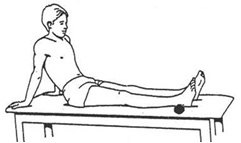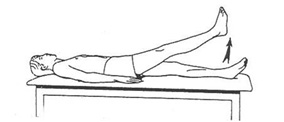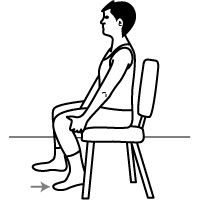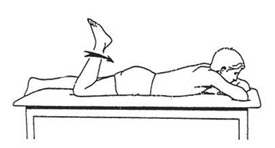Arthroscopy of the knee is usually performed to diagnose and treat internal knee problems such as cartilage tears (meniscal tears), loose bodies, arthritis and ligament damage surgery. On occasions, arthroscopy may be used for other conditions, which will be explained to you by the doctor. Simple arthroscopy procedures are carried out in hospital as a Day Care surgery or 1 night stay. You may also require at least 1 night stay for medical reasons.
On admission, you will initially meet the nursing staff and later have a brief check up by the Anaesthetist. On the day of the operation, your knee will then be prepared with hair removal and a wash. You will be taken to the operating theatre depending on the time of your surgery. In most patients, the knee arthroscopic procedure will be carried out under a General Anaesthesia (you will be asleep).

Your knee will be washed with antiseptic solution and a tourniquet applied to the thigh to prevent bleeding during the operation.
The arthroscope (telescope) is introduced into the knee through a small puncture wound beside the knee cap. Initially a detail examination is made of the entire knee first and then the knee problem you have as discussed with you by Dr Shreyash Gajjar.
Cartilage damage, loose bodies and arthritis are then treated with small instruments that may be introduced through a second puncture wound on the other side of the knee cap. You will be provided with a recorded CD of your procedure.
At the end of the operation, the small puncture wounds will be closed with steri-strips (or occasionally with sutures), the knee is then wrapped up with a sterile bandage.
After the operation, you will be taken to the recovery room and later back to the ward or Day Care surgery. Detailed findings of your operation will be given to you the next day or at your follow-up appointment which will be made for you approximately 2 weeks after the operation.
You will be required to stay in hospital for at least 1 night following your operation & also checked whether you are safe to be discharged.
You must have someone available to take you home from hospital.
You must not operate machinery or drive a car for minimum 14 days after your procedure (depending on the surgical procedure).
You should have a responsible adult with you at home for at least the first 1-2 days.
It is important that you attend this appointment arranged 2 weeks after your operation, as part of your ongoing treatment/management.
You will find 2-3 small puncture wounds under the bandage covering your knee. These are made by the surgical instruments used during the procedure and are closed by tapes called steri-strips. Although these wounds are only small, the surgery inside your joint is significant and your joint will take time to recover. It is important that you follow the instructions on this sheet to facilitate healing and to maintain the muscle strength and range of movement of your knee.
You will be required to rest completely for the first 2-3 days following surgery. This means Sitting in bed or on the sofa, doing some light exercises and icing the knee regularly. By the 3th or 4th day you may start to walk around a little. If you work in an office (deskwork) you may return to work after first week only if your knee feels comfortable. More active jobs may require longer periods off work e.g. up to 2-3 weeks for heavy jobs.
It is very important not to push your knee too hard, as this will slow the healing. Signs that indicate that you are doing too much include: increased swelling, increased pain, and increase in temperature in the joint.
This area should remain dry until the dressings are removed 10-14 days after the operation. The areas may be slightly painful and swollen for 1-2 months post-operatively and will benefit from gentle massage once healed. In case if there is slight bleeding from the operative site, please contact Ortho OPD (Ph – 02230970072) or doctor for advice if this happens.
The amount of swelling following an arthroscopic surgery varies with different people and tends to be dependent on the condition of your knee before the operation and on how much is done to your knee at the time of surgery. An increase in the amount of swelling in the early days after your operation indicates that you are increasing your activities too quickly. It is important to decrease the amount of swelling as quickly as possible, as it will cause problems with healing, strength and knee movement.
This can be achieved by:
Ensure that you take the tablets if you have pain.
If your pain is not controlled with tablets please phone OPD (02230970072) for advice.
You may commence weight bearing after 1-2 days. DO NOT DO TOO MUCH TOO SOON.
If you have pain or swelling – then rest is the best treatment early on.
Crutches are to be used to control the weight transmitted through your joint.
This means that you may take as much weight as comfortable through your operated leg. The crutches are used in this instance to help control swelling and pain and to assist in the healing and recovery of the joint. It is important that you tighten your thigh muscles each time you take weight through your operated leg. You may discard your crutches once you can walk with good balance, without pain and the swelling around your joint has reduced.
It is extremely important to negotiate stairs slowly when you are on crutches.
Remember This Sequence:Begin this exercise program the day after your operation and continue it for the first two weeks. Take pain relieving tablets as advised.
(1) KNEE LOCKING USING THE QUADRICEPS
With a rolled towel under your heel, tighten the muscle at the front of your thigh and push your knee into the bed. Hold for 5 seconds and relax. Repeat 10 to 20 times, 2 to 3 times a day.
(2) STRAIGHT LEG RAISES
Lying flat, lock your knee straight and then lift the whole leg about 30cms off the bed.
Hold for 3 seconds and relax. Repeat 10 to 20 times, 2 to 3 times a day.

Bend your Knee (Slide your heel backwards) as far as comfortable.
Hold 3 seconds. Repeat 10 times, 2 to 3 times a day.
Straighten the knee fully from bent position. Hold 3 seconds. Repeat 10 times, 2 to 3 times a day. Gradually regain your full movement.

Begin this exercise about 3 days after your operation. Lie on your stomach and bend your knee as far as comfortable. Hold for 3 seconds and relax. Repeat 10 times, 2 to 3 times a day.
These times are guidelines only and may vary depending on your surgery.